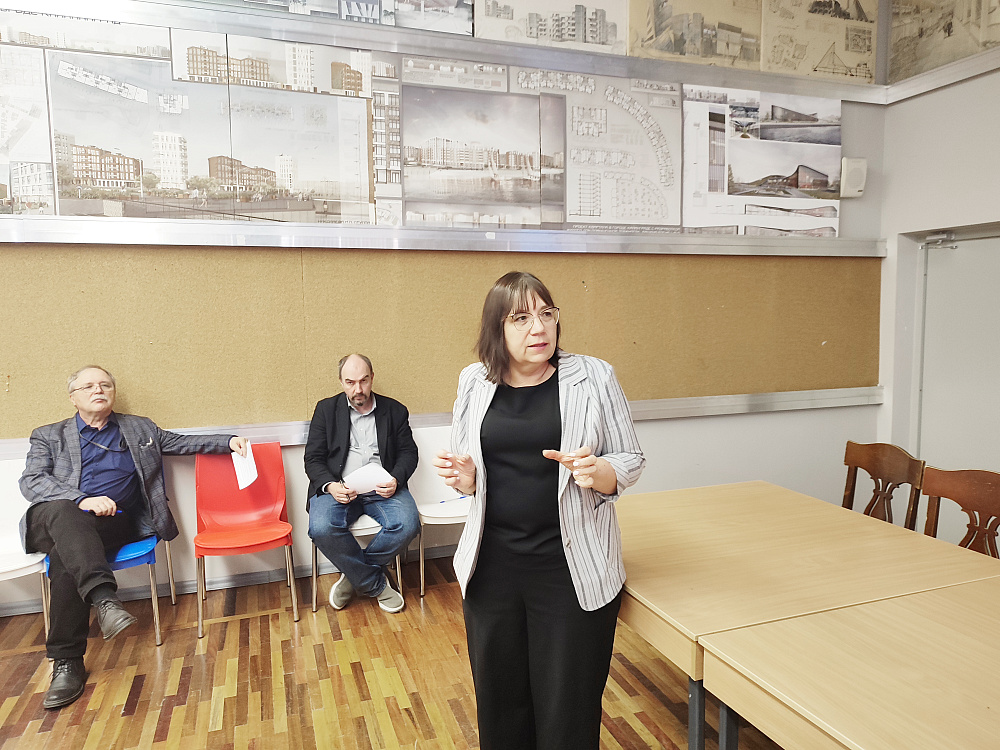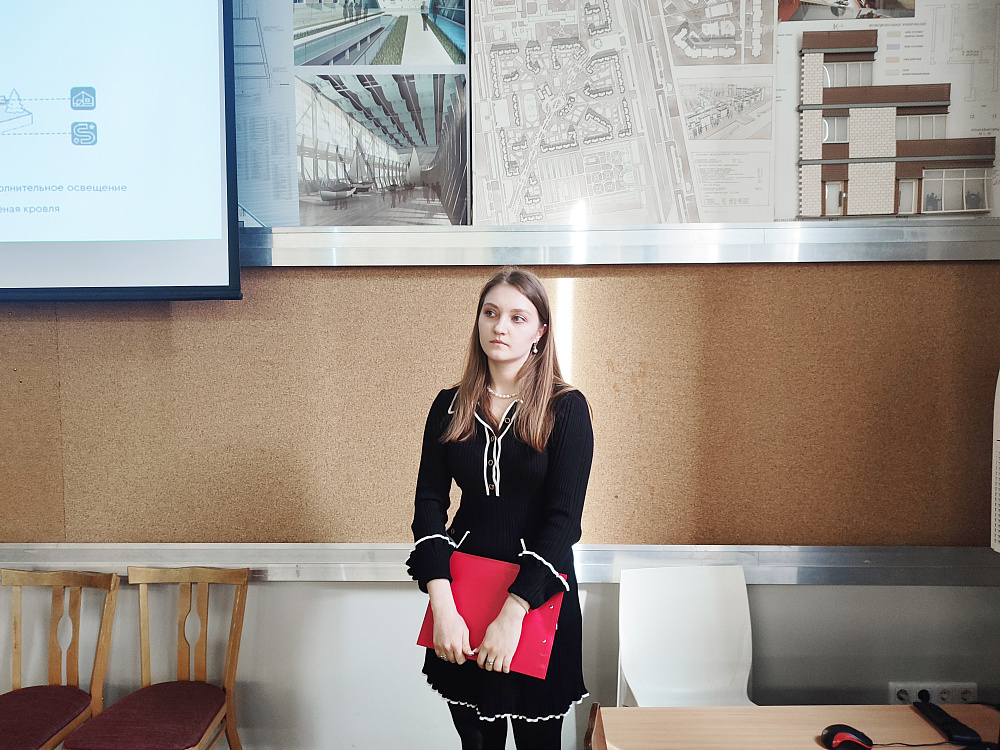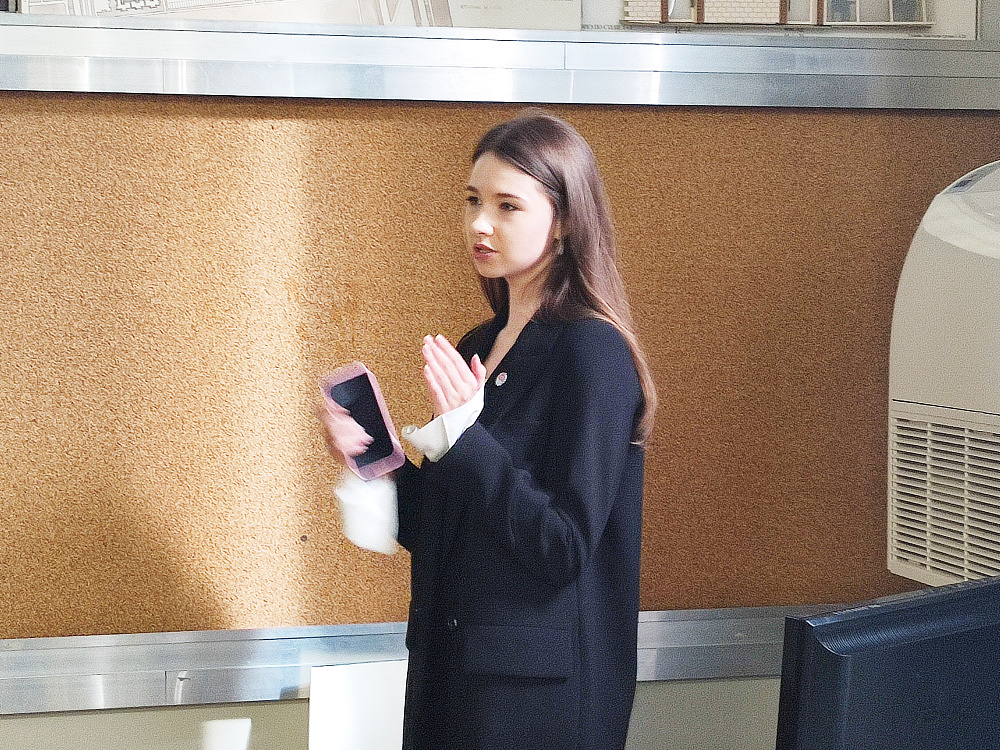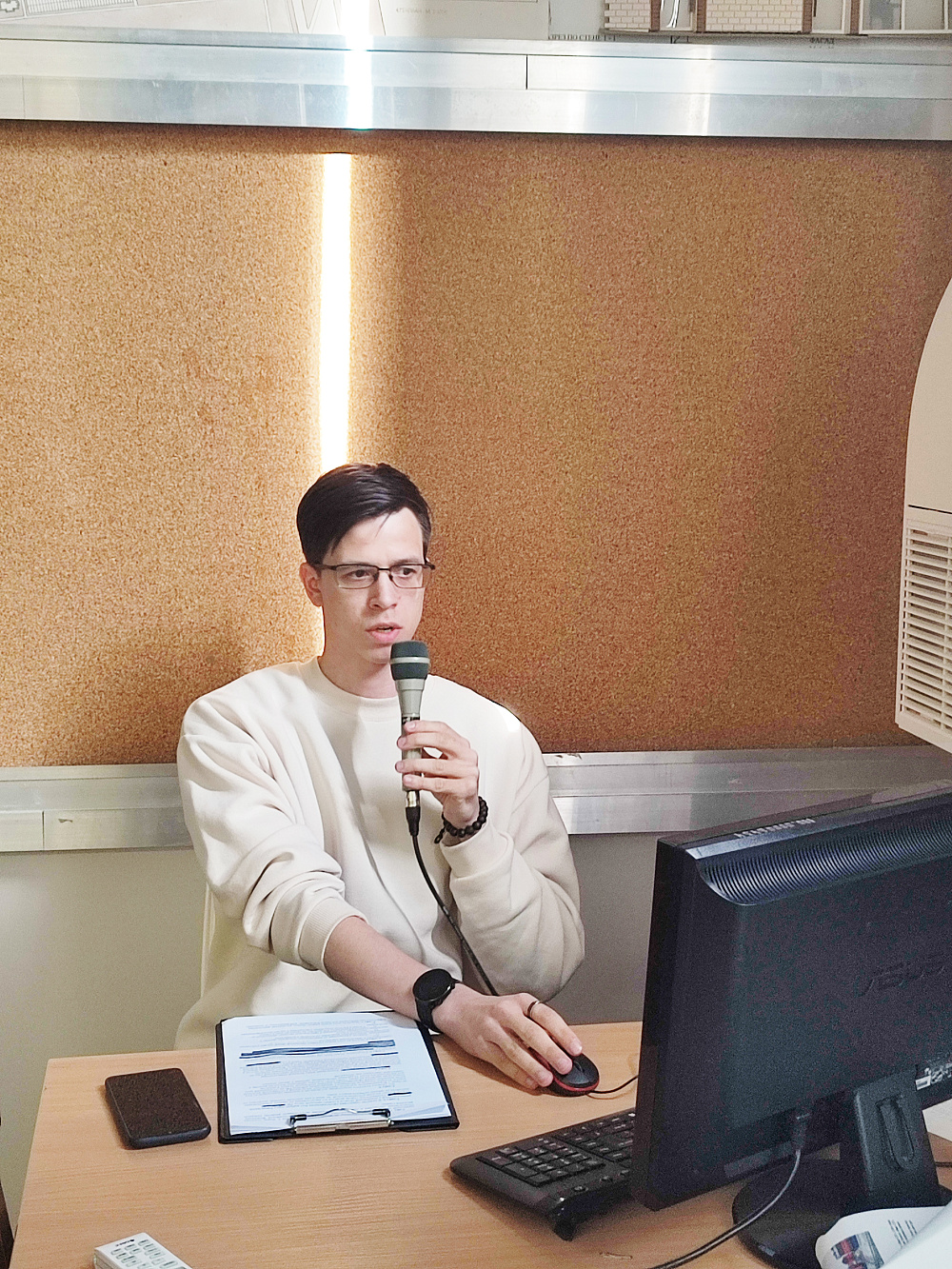 Ekaterina Vozniak and Grand Prix winner Viktoria Ivanova
Ekaterina Vozniak and Grand Prix winner Viktoria Ivanova
SPbGASU summed up the results of the III National (All-Russian) scientific and practical conference "Architectural Seasons". The conference work was held in four departmental sections, 88 reports were heard.
Each department identified the best speakers who presented their work to the competition jury, which included lecturers of the Faculty of Architecture and invited experts. However, there were not four but five contenders for the award: the Department of Architectural Design nominated two finalists at once.
"The smartest and strongest master's students of our Faculty have participated. Representatives of Peter the Great St Petersburg Polytechnic University have also joined us. We need to develop, compare our level with others: we will take something from you, and you will take something from us. We will compete, but this will not cancel our deep respect for each other," said Ekaterina Vozniak, Dean of the Faculty of Architecture, in her welcoming speech.
Associate Professor at the Department of Architectural Design Fedor Perov announced the opening of a new field of study in the Master's program 07.04.01 Architecture. Architectural Design and Urbanism for the Arctic Zone of Russia since 2025. Fedor Viktorovich emphasized that the Arctic has become the most important area of development and training at SPbGASU.
During the presentation part, the SPbGASU master's student Viktoria Talavirya presented the results of her dissertation. She examined the formation of the architectural and design environment of the equestrian complex as a public space (scientific supervisor - Associate Professor at the Department of Landscape Architecture Irina Shkolnikova).
According to Viktoria, modern society has faced a number of problems in the environmental, social, and economic spheres, indirectly or directly related to the equestrian industry. Such problems include the deterioration of the physiological and psychological state of the population, the reduction of buffer zones within the city, the destruction of natural landscapes, and the low level of equestrian sports in Russia. As a solution to these problems, the student proposed holding sports events, creating unique public spaces, developing domestic horse breeding, etc.
"The concept of an ideal equestrian complex should be based on the symbiosis of three factors: the creation of a public space that attracts people to equestrian sports; involvement in the culture of ecotourism, promotion of views and ideas that influence attitudes towards ecology; creation of conditions that satisfy all the needs of horses. The results of the dissertation can be used in further theoretical and practical work on the design of multifunctional equestrian complexes. Two scientific articles have been published on the topic of the dissertation research," said Viktoria.
Aleksandra Sudarikova, a student of the Higher School of Design and Architecture of the St Petersburg Polytechnic University, presented a report on "Development of ecotourism territories in Russia using the example of the Republic of Karelia" (scientific supervisor - Associate Professor of the Higher School of Design and Architecture Elena Ladik).
According to Aleksandra, domestic tourism is becoming increasingly popular in Russia. At the same time, ecotourism is becoming the most dynamically developing direction, which is due to the desire of modern people for clean and safe recreation, saving resources and preserving the natural environment. Ecotourists prefer recreation in small groups in active interaction with nature, choose environmentally friendly options for transport and accommodation. In this context, Karelia with its unique natural landscapes is one of the most attractive regions.
The student chose the city of Kem, located on the route to the Murmansk Region and the Solovetsky Islands, as the territory for the study. By order of the President of Russia, the Kemsky District and the Belomorsky District are classified as Arctic support settlements.
Aleksandra identified the territory for the development of tourist infrastructure and proposed to form additional walking and water routes in the city. In addition, she developed a project proposal for an all-season tourist complex on the riverside territory of the Kem River, which will become a potential point of attraction for city residents and tourists.
Vasilisa Smirnova, an SPbGASU master's student, spoke about the regional architectural features of the manor development of the 18th–19th centuries in the city of Toropets in the Tver Region (scientific supervisor - Associate Professor at the Department of Architectural and Urban-Planning Heritage Natalia Dubrovina).
There are six estate complexes on the territory of modern Toropets. They are significantly ruined and in a bad state. To find analogues, Vasilisa expanded her studies and examined 46 estates where the main house had been preserved. She focused on estates built of stone in the 18th–19th centuries in the classical and eclectic styles.
"Five main types were identified in general according to the volumetric-spatial and compositional solution of the main house. The estates of the city of Toropets turned out to be diverse. They are related to the types of the Pskov, Novgorod, Tver and Smolensk regions. However, the estate has characteristic features of the so-called Toropets Baroque," the student said.
The author believes that the main results of her project are the organization of points of attraction for local residents and tourists, the design of development zones for children and the improvement of territories.
Master's student Nikita Milov developed a project for a multifunctional sea terminal in Kandalaksha, Murmansk Region (scientific supervisors: Associate Professors at the Department of Architectural Design Aleksey Mikhalychev, Igor Ivanov, Yulia Devyatova and Valeria Supranovich). The topic of the work is based on a fundamental approach to the development of the Far North. The student is confident that Kandalaksha has great tourism potential as a point for sea and river cruises from Moscow and St Petersburg to Arkhangelsk, Salekhard, Tiksi and further along the northern coast. Kandalaksha can become both a transit point for these routes and create its own package of offers. The routes can be one-day, short-term, medium-term and long-term.
Viktoria Ivanova, a student of the SPbGASU Department of Urban Planning, designed a residential area with a multifunctional tourist complex in Monchegorsk, Murmansk Region (scientific supervisors: Associate Professors at the Department of Architectural Design Fedor Perov and Aleksandra Eremeeva, Associate Professor and Academic Secretary at the department Olga Kokorina, Senior Lecturer Larisa Venatovskaya).
"Based on the urban development analysis, I identified the main hubs of public life in the city, drew up a diagram of the relationship between the main hubs and identified four main sites that were the most promising for development. The choice was made on the territory of the Leningradskaya Embankment with a park near Komsomolskoye Lake and a yacht club. It would seem, what kind of yacht club is there in the north? However, in Monchegorsk it has existed since the 50s of the last century. In the summer season, sailing competitions and regattas are held annually, and last March, the Russian Windsurfing Championship was held. At the same time, the infrastructure of the yacht club is in decline: the building is falling apart, there are vacant lots and chaotically located boathouses and garages around. There is a complex system of residential development in the block. It is mainly represented by outdated Soviet-era buildings in need of renovation."
According to Viktoria, the main urban problems are ecology and population outflow. However, there are recreational resources that can be used wisely.
Viktoria proposed creating a single route that would connect four key points – the bus station, the park at Komsomolskoye Lake, Leningradskaya Embankment and the yacht club, which could become a center of attraction not only within the block, but for the entire city. The complex consists of various buildings connected to each other: residential buildings, a hotel, a preserved yacht club building, new and newly constructed boathouses, a panoramic restaurant on the water, a building of a water entertainment complex with a water park, an entertainment center, exhibition halls, and a cafe. The water park offers a view of Lake Imandra and the Khibiny Mountains. The architectural appearance was formed in accordance with Sami motifs (the Sami are the indigenous people of the territory).
The author of the project is confident that the multifunctional complex can become an additional vector for the city’s development, slow down the rate of outflow of local residents and increase the flow of tourists to the region.
Aleksandra Sudarikova, Vasilisa Smirnova, Viktoria Talavirya, Nikita Milov and Viktoria Ivanova received first-degree diplomas. Viktoria Ivanova also received the Grand Prix.
Our wishes of further professional success!











